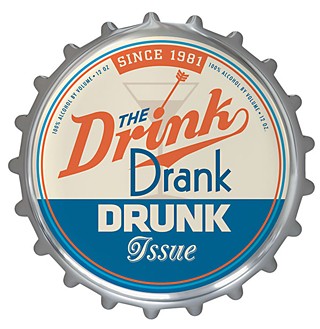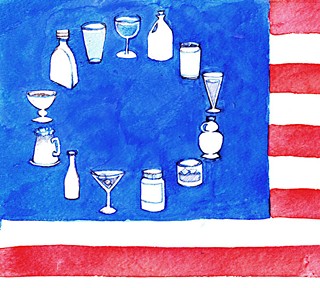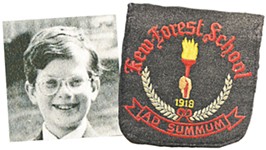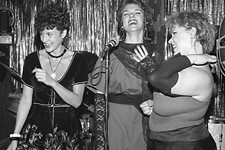The Spirit – and Spirits – of '76
Mr. Smarty Pants knows America's Alcohol History
By R.U. Steinberg, Fri., July 5, 2013
This July 4, there's a good chance you will be enjoying some of the holiday's many fine traditions. Going to a picnic. Eating watermelon. Watching fireworks. Going to a parade.
But to really get in that Spirit of '76, consider a stiff drink.
How could drinking alcohol help you show national pride? If you were one of the early colonists, you drank alcoholic beverages pretty much all day because much of the water in 17th century Europe was polluted, and alcohol was considered safer to drink. In Drinking in America: A History, Mark Edward Lender and James Kirby Martin write, "The Arbella, carrying Puritans to Boston in 1630, set sail with three times as much beer as water, along with 10,000 gallons of wine. Most settlers also brought along a ration of distilled spirits, which kept even longer than beer."
In December 1620, the Pilgrims had already run out of beer. By the time the Mayflower set anchor at Plymouth Rock in February 1621, the captain ordered the crew to share their beer with the passengers, even if it meant they had to drink water on the way back to England.
It wasn't long before the colonists began making their own brews. "Colonial wives incorporated brewing into their household routines, and beer became a dietary staple," write Lender and Martin.
According to writer Ed Crews, many colonial Americans believed alcohol could "cure the sick, strengthen the weak, enliven the aged, and generally make the world a better place. ... Craftsmen drank at work, as did hired hands in the fields, shoppers in stores, sailors at sea, and soldiers in camp. ... If they indulged too much, then they had dozens of words to describe drunkenness. Benjamin Franklin collected more than 200 such terms, including addled, afflicted, biggy, boozy, busky, buzzey, cherubimical, cracked, and 'halfway to Concord.'"
As Mike Rowe (of Dirty Jobs fame) explains in the miniseries How Booze Built America, taverns were the social network of the time, and beer was the glue that held everybody together. In fact, Rowe says the tune of our national anthem was based on "To Anacreon in Heaven" (also called "The Anacreontic Song"), an English drinking song. And Francis Scott Key was on a ship anchored outside Fort McHenry drinking Madeira wine when he was writing down the words.
Crews said our Founding Fathers also enjoyed a glass or two. "John Adams began his days with a draft of hard cider. Thomas Jefferson imported fine libations from France. At one time, Samuel Adams managed his father's brewery. John Hancock was accused of smuggling wine. Patrick Henry worked as a bartender and, as Virginia's wartime governor, served home brew to guests."
According to Crews, United States government figures for 1790 showed that annual per capita alcohol consumption for everybody older than age 15 was 34 gallons of beer and cider, five gallons of distilled spirits, and one gallon of wine.
So what to drink on this most patriotic of days? How about hard cider – a very common drink, especially in the early days. Apple trees could be grown throughout the colonies, unlike grapes and grain, which did not grow well in New England.
If you want to go with beer, colonists used local ingredients such as corn, wheat, or oats to make their brew. Pick a beer without much hops because they couldn't grow well locally.
It took a while for America's wine industry to take off. Madeira was probably the most popular imported wine. In 1765, Benjamin Franklin used Poor Richard's Almanack to promote the growing of American grapes for making domestic wines.
If you prefer hard liquor, New Englanders consumed large quantities of rum made from molasses, which was available from the West Indies. One popular rum drink was called "flip" and was made from rum and beer sweetened with sugar and warmed by plunging a red-hot fireplace poker into the serving mug.
Later colonists drank whiskey because corn was available in the South and rye was available in the North. Originally frowned upon by the upper classes because they considered it a bastion of debauchery, whiskey consumption increased as the colonists wanted to snub their noses at England.
Happy Birthday, America! That's something we can all drink to.










